How do you know if you have termites in your wall?
Have you just seen some brown stuff coming out from the wall? Or the wall lining has started to bubble? Wondering if this is evidence of termites (white ants)?
In Australian homes, most walls are lined with Gyprock (plasterboard), concealing the timber framework. You could have termites chewing the frame, and you wouldn’t even know until they make themselves evident.
Signs of termites in your wall
- Termite ‘mudding’ coming out from the wall.
- ‘Bubbling’ of the paintwork
- Termite lead travelling up the wall.
- Soft and crumbling timber trims
- The power turns off.
- Noise emitting from the wall
- Detection devices. Thermal camera, a Moisture meter or Termatrac motion detection.
Termite ‘mudding’ coming out from the wall.
This usually is when the alarm bells should start to ring. This mudding could appear overnight, indicating significate termite activity behind the wall lining. Termite ‘mudding’ is typically dark brown and crumbly to the touch.

Bubbling or flaking paintwork
The paintwork can start peeling or flaking when termite activity is behind the wall. This can be caused by the moisture termites bring when they aggregate in large numbers when forming a nest or a bivouac in your wall.
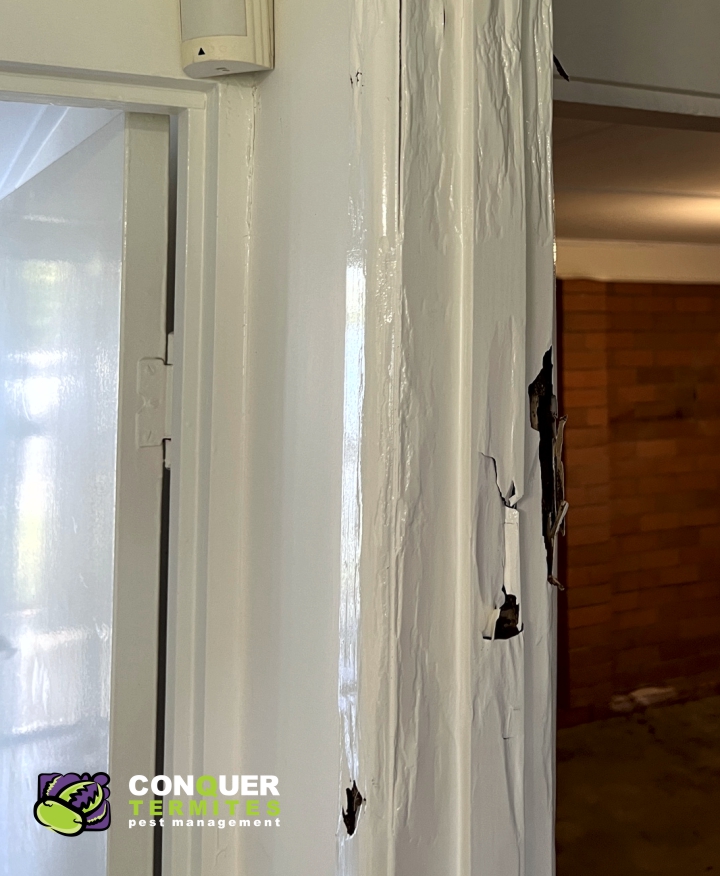
Termite lead visible travelling up the wall
Termite mud leads on the outside is another telltale sign you have a termite issue in the wall. Termites never want to be out in the open as they always operate in an enclosed environment where they stay moist and secure. They tend to build these leads when they want to bridge over a section to travel more rapidly.
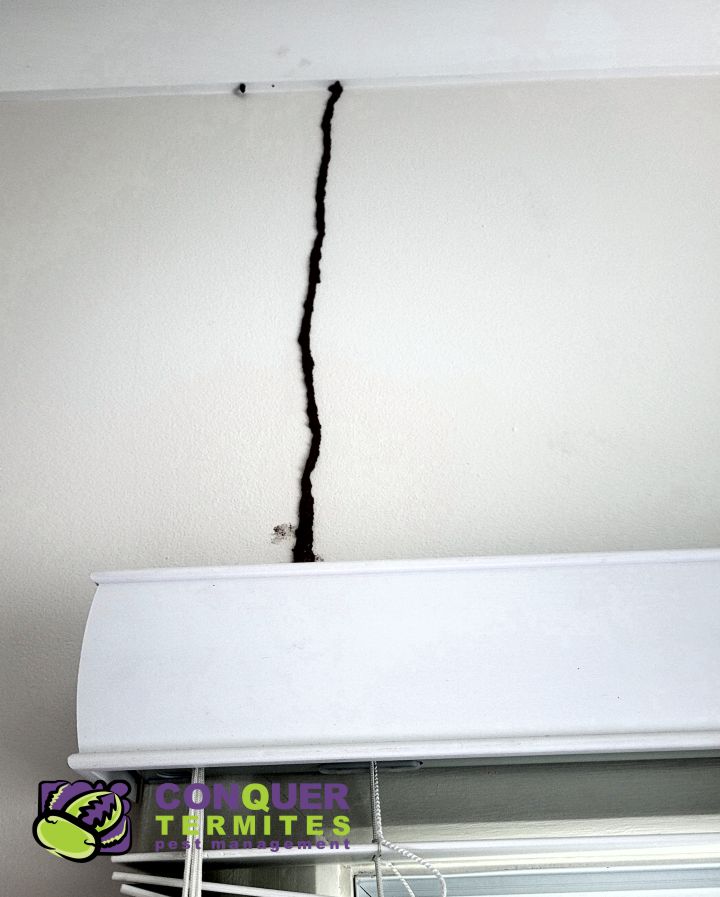
Soft and crumbling timber trims
If you have termite activity in your walls, there is a good chance they will start eating the surrounding timber skirting boards, window or door frames. Most trim timbers are made from soft pine, a highly desirable food for termites.
It’s not a good thing that the termites are eating these timbers, but it is a good thing that they have made themselves evident before servere damage occurs in the walls.
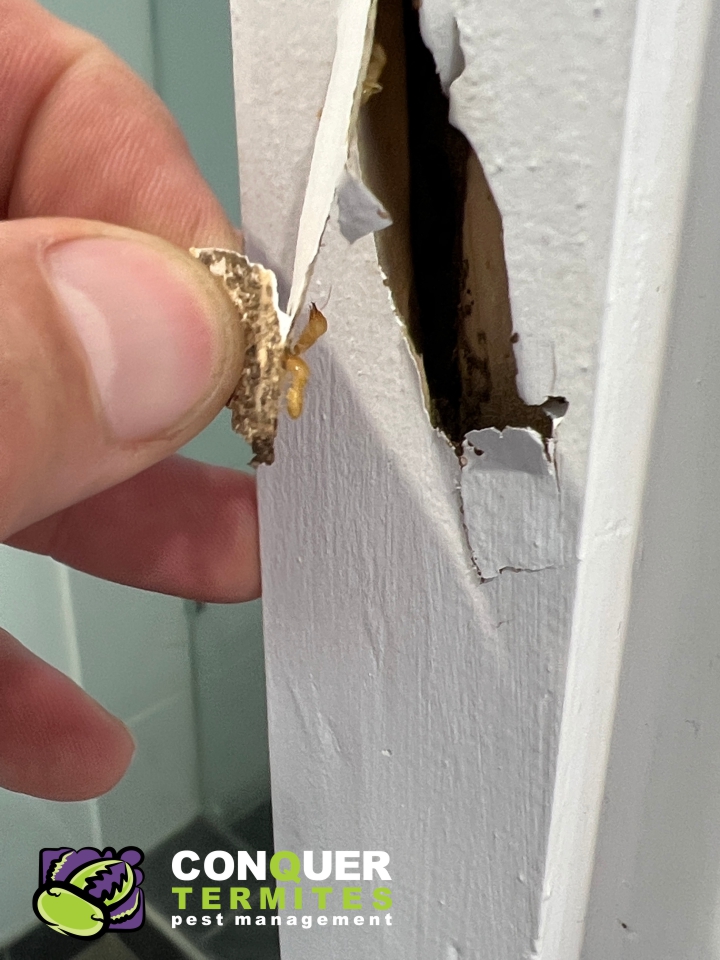
Your power turns off
If all of a sudden the power flips off or the light switch doesn’t work, this could be a sign you have termites. Inside the wall, termites can build up a lot of mudding that can encase electrical wiring, causing the shorting.
Remember, your first contact for advice is a qualified Electrician.
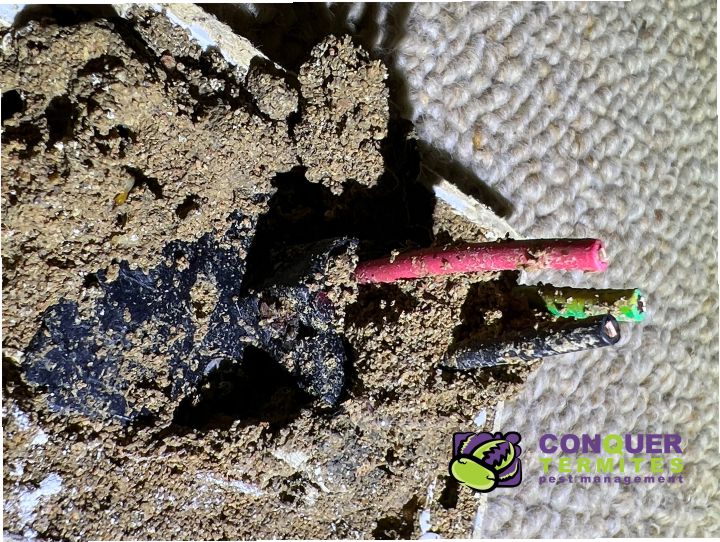
Clicking noise emitting from the wall - is it termites?
Termites can make two types of noise that humans can hear. A clicking sound or a soft gnawing noise.
We mostly hear the ‘clicking’ noise when the soldier termites bang their heads on the timber to signal an evacuation alarm. They usually only make this noise if they have been disturbed.
The soft gnawing sound comes from the worker termites as they scrape the wood into their mouths with their mandibles (jaws). You really need a quiet environment and a very good ear to hear this sound.
Many homeowners mistake the scuttling noise of cockroaches or rodents in the wall cavity for termites.
What do termites sound like …. Please read

How to check if you have termites in your wall
Apart from the overt signs of termites like mudding, crumbling timber and termite leads, you are limited to how you can detect termites in your wall.
Basically you only have two options:
- Bang the wall with an open hand to hear if termite workings fall away.
- Get your Stanley knife out and cut access panels in the gyprock to see inside the cavity.
If you are invasive like this, you risk disturbing the termites, causing them to flee the structure temporarily. You might think this is a good thing! But then you limit your ability to detect them in other areas. Also, when you call in the professional pest controller, and you should, they’ll have zero chance to treat and detect the termites.
How the professionals detect termites in your wall
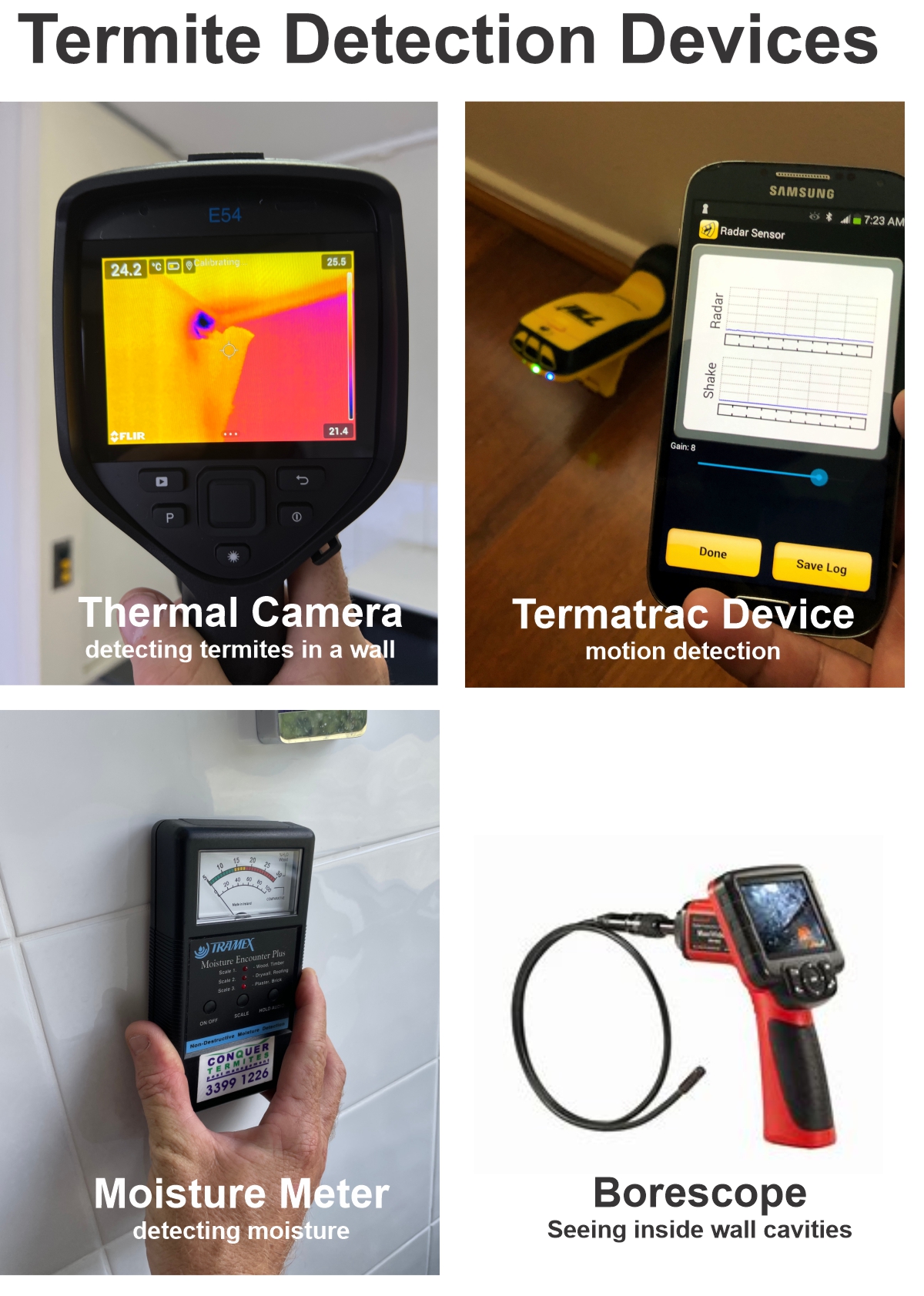
A termite inspection in Australia requires an inspector to follow the guidelines outlined in the Australian Standards 3660.2 & 4349.3. It is referred to as a Visual Termite Inspection, meaning it is non-invasive (can’t make holes in the walls). But Conquer Termites inspectors are always fully equipped with four detection devices to give you that extra information.
- Thermal camera - picks up surface temperature anomalies (doesn’t see through walls).
- Moisture meter - detects areas on the wall that have high moisture readings.
- Termatrac Motion Detection device - sends microwave signals into the wall to detect movement.
- Borescope - allows inspecting inside the wall cavity by making a small hole.
For more information about the detection devices we use to find termites in a wall, please click here
Check how a termite inspection should be done
Do I need an invasive inspection to confirm if I have termites in my wall?
Even with all our fancy detection devices, we might recommend being invasive and removing some wall lining to get visual confirmation of termites. Usually, we can narrow down the areas we want to check with the above devices.
There is an actual ‘Cost vs Benefit’ with this action. Removing the wall lining might only reveal minor termite damage or activity that will cost less than repairing the wall.
But the only definitive way to assess the true extent of termite damage in your walls is to remove all the gyprock sheeting until there is no evidence of termite activity.
Why do we need to advise to be invasive after a termite inspection
We might complete a termite inspection, and there is no visual evidence of termites - no soft timber, no high moisture readings and no thermal anomalies. There might have been past termites activity that has been inactive for an extended period but has caused extensive damage in the walls. The only way to know is to reveal it.
Snap-in wall vent to check for termites in your wall
A good approach is to cut a 245 x 145 mm hole in the wall and place a snap-in wall vent. This way it is super tidy and allows ongoing inspection.

Call your local Termite Experts
If you have some concerns about possible termite activity in your walls, call Conquer Termites now to arrange an inspection using the four detection devices.




